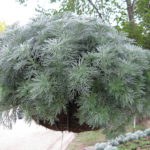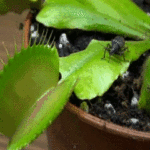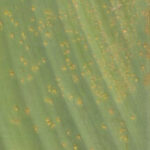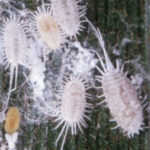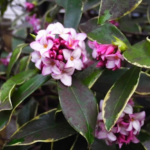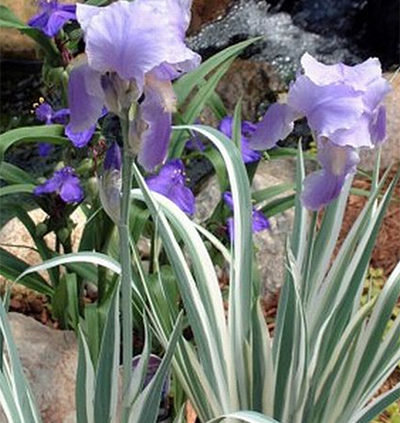
Iris Pallida Variegated Iris Care
Iris Pallida How To Grow Drought Resistant Variegated Iris Varieties
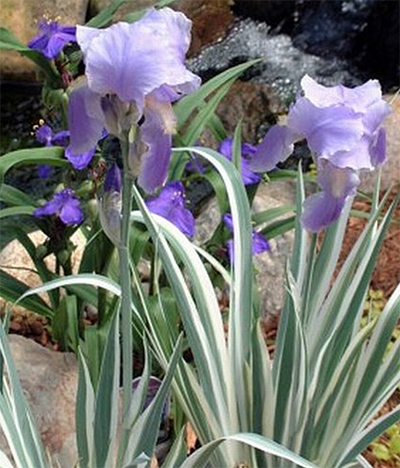 The Iris Pallida Argentea Variegata is also commonly known as the Zebra Iris or Silver Variegated Sweet Iris or Dalmatian Iris. It is one of the most attractive looking of the variegated foliage plants, that can be equally and easy to grow in all home gardens. The foliage is the best and the most attractive part of the plant. The leaves are sword-shaped and look evergreen for the most part of the year, except the winters. The plant can be grown in containers or in the soil beds. They are rabbit resistant and are also attracted to butterflies and bees while in bloom.
The Iris Pallida Argentea Variegata is also commonly known as the Zebra Iris or Silver Variegated Sweet Iris or Dalmatian Iris. It is one of the most attractive looking of the variegated foliage plants, that can be equally and easy to grow in all home gardens. The foliage is the best and the most attractive part of the plant. The leaves are sword-shaped and look evergreen for the most part of the year, except the winters. The plant can be grown in containers or in the soil beds. They are rabbit resistant and are also attracted to butterflies and bees while in bloom.
Details About Zebra Iris
The Iris Pallida Argentea Variegata and Iris Pallida Aurea Variegata belong to the family Iridaceae and the genus Iris. They are part of the very old original heirloom bearded iris species, which has bred the modern tall bearded Iris varieties of today. They form clumps of sword-shaped leaves. These stripes run on the inside of the leaf and are run from the top to the bottom of the leaf. The leaves are variegated and they are evergreen for most seasons. They do put on a show of violet coloured flowers that are fabulously fragrant, that appear during the late spring period. The flowers are excellent for cutting and also form a very good addition to most gardens. The flowers of the Zebra Iris are 3 to 5 inches wide and show up during late spring and early summer. They will be seen rising to about 40 inches tall. The plant rises to a height of 24 to 36 inches and spreads to 18 to 24 inches. They reach their ultimate height in 2 to 5 years.
How to Grow?
The Zebra Iris or Dalmatian Iris loves to grow in areas where they get full sun or in hot areas partial sunlight is a splendid idea. They will thrive when they are placed south facing and can grow well in sandy and loamy soil. They will not face problems growing on slightly acidic or neutral soils. The soil has to be a well-drained one. They are tolerant to shade, but love the sun but not too hot all day sun.
- The rhizomes of the Zebra Iris need to be planted in a soil that receives morning sun to partial sunlight all day and well drained soil.
- Adding organic fertiliser to the soil well under the rhizome before planting the rhizome will help in good growth.
- The rhizomes have to be planted in the soil in such a way that the top growth part is partly seen above the soil.
- They need to be watered well when they are first planted in the soil.
- Once the Zebra Iris plant is established, they require very less maintenance and are frost hardy and drought tolerant.
- They can also be propagated by seed. The seeds have to be sown in pots in a cold frame during the spring or autumn season. Allow the seeds to germinate indoors and once they start to grow, you can transplant them outdoors
Care for Zebra Iris
- Care is needed to clean up and remove any dying foliage during the autumn winter and summer.
- The old flower stems have to be removed from the plant after the flower has wilted.
- The clumps can be easily divided every 3 to 4 years during the cool autumn weather.
- The leaves of the tall variety Irises can be trimmed to one-third its size to reduce wind rock when they are first transplanted.
Iris Pallida – Silver and Golden Variegated Form
Iris Pallida Argentea Variegata has soft textured variegated leaves, of silver whitish and grey green stripes in the middle of the leaves.
Iris Pallida Aurea Variegata has gold and greenish grey striped variegated leaves.
Both species provide orris root crushed powder from their rhizomes.



